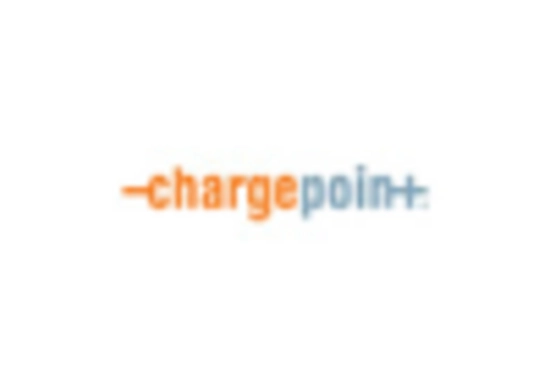Expansion of Urban Infrastructure
The expansion of urban infrastructure is a vital driver for the Charging As A Service Market. As cities grow and evolve, the need for comprehensive charging solutions becomes increasingly apparent. Urban areas are witnessing a surge in electric vehicle usage, necessitating the development of charging stations in convenient locations. Recent data indicates that urban centers are prioritizing the installation of charging infrastructure to accommodate the rising number of electric vehicles. This urbanization trend is likely to create new opportunities for Charging As A Service Market providers, as they can offer tailored solutions that meet the specific needs of city dwellers. Moreover, the integration of charging stations into existing urban infrastructure, such as parking lots and public transportation hubs, is expected to enhance accessibility and convenience for users, further driving the growth of the Charging As A Service Market.
Growing Demand for Renewable Energy
The increasing demand for renewable energy sources is significantly influencing the Charging As A Service Market. As consumers and businesses seek to reduce their carbon footprints, the integration of renewable energy into charging solutions is becoming a priority. Many Charging As A Service Market providers are exploring partnerships with renewable energy suppliers to offer green charging options. Recent statistics indicate that a substantial portion of new charging stations is being powered by solar or wind energy, aligning with the sustainability goals of electric vehicle users. This trend not only enhances the appeal of charging services but also supports the broader transition to a low-carbon economy. As the demand for clean energy continues to rise, the Charging As A Service Market is likely to benefit from this shift, positioning itself as a key player in the renewable energy landscape.
Increased Electric Vehicle Adoption
The rise in electric vehicle adoption is a primary driver for the Charging As A Service Market. As consumers and businesses increasingly transition to electric vehicles, the demand for accessible and efficient charging solutions grows. Recent data indicates that electric vehicle sales have surged, with projections suggesting that by 2025, electric vehicles could account for over 25% of total vehicle sales. This shift necessitates a robust charging infrastructure, which Charging As A Service Market providers are well-positioned to deliver. The convenience of on-demand charging services aligns with consumer preferences for flexibility and ease of use, further propelling market growth. As more electric vehicles hit the roads, the Charging As A Service Market is likely to expand significantly, catering to the evolving needs of a more electrified transportation landscape.
Government Incentives and Regulations
Government incentives and regulations play a crucial role in shaping the Charging As A Service Market. Many governments are implementing policies aimed at reducing carbon emissions and promoting electric vehicle usage. For instance, tax credits, rebates, and grants for electric vehicle purchases and charging infrastructure development are becoming increasingly common. These initiatives not only encourage consumers to adopt electric vehicles but also stimulate investment in charging services. According to recent reports, countries with strong regulatory frameworks for electric vehicles have seen a corresponding increase in charging station installations. This regulatory support is expected to continue, fostering a favorable environment for the Charging As A Service Market to thrive. As governments prioritize sustainability, the alignment of policies with market needs will likely enhance the growth trajectory of charging services.
Technological Innovations in Charging Solutions
Technological innovations are transforming the Charging As A Service Market, making charging solutions more efficient and user-friendly. Advancements in charging technology, such as ultra-fast charging and wireless charging, are enhancing the overall user experience. These innovations not only reduce charging times but also improve the accessibility of charging stations. Data suggests that the introduction of ultra-fast charging stations can decrease charging times to as little as 15 minutes, making electric vehicles more appealing to consumers. Furthermore, the integration of smart technologies, such as mobile apps for locating charging stations and managing charging sessions, is becoming increasingly prevalent. This technological evolution is likely to attract more users to the Charging As A Service Market, as convenience and efficiency become paramount in the decision-making process for electric vehicle owners.


















Leave a Comment